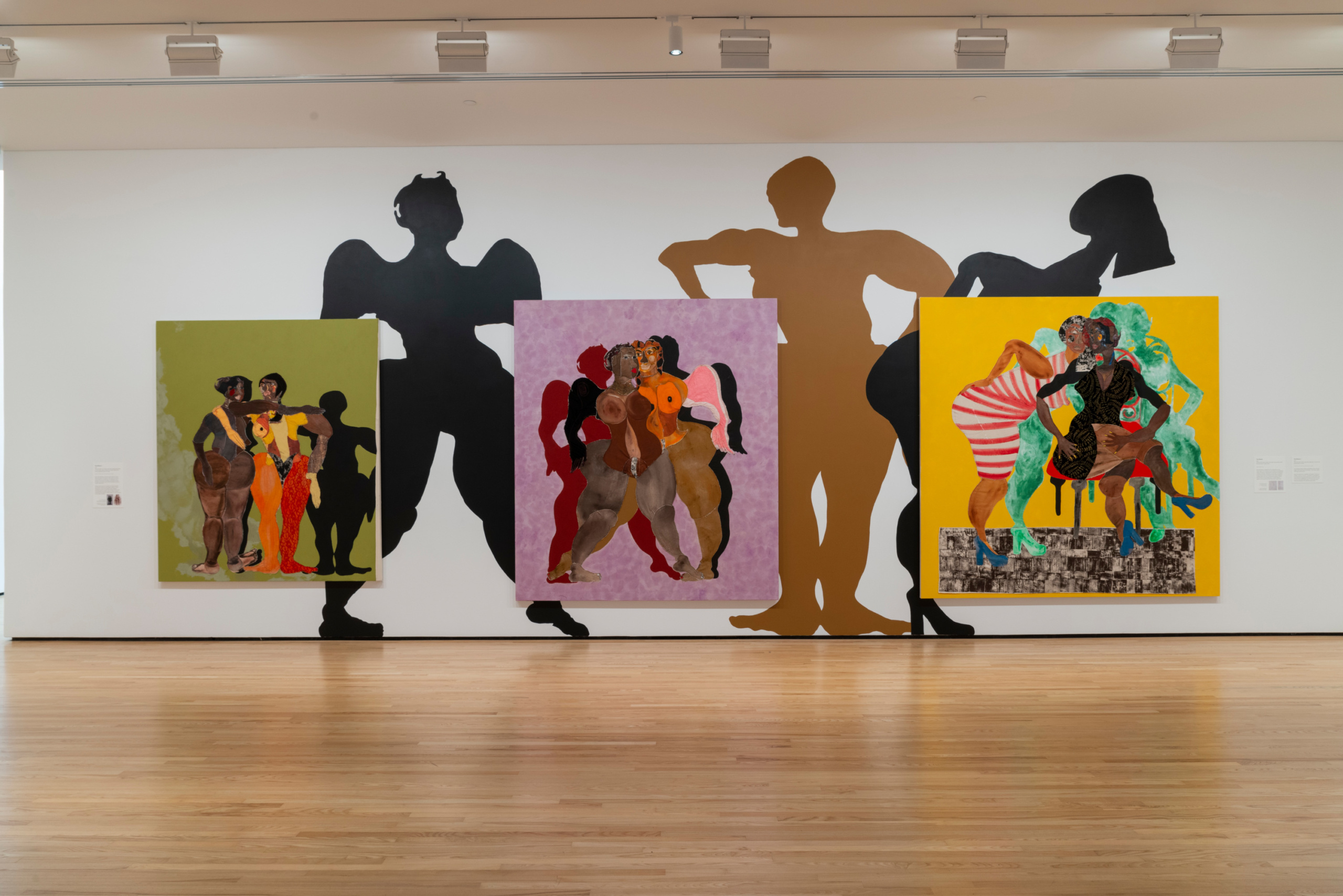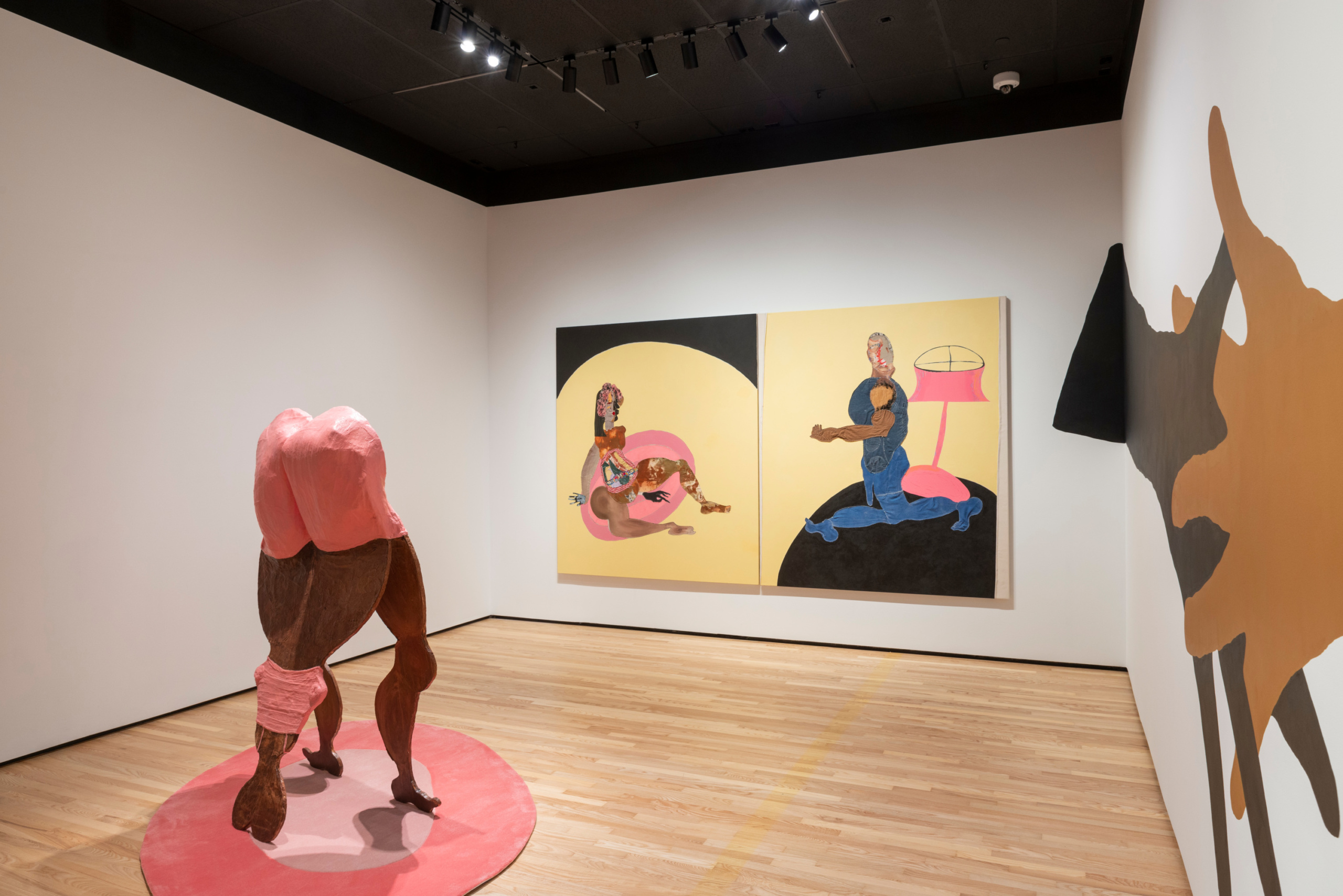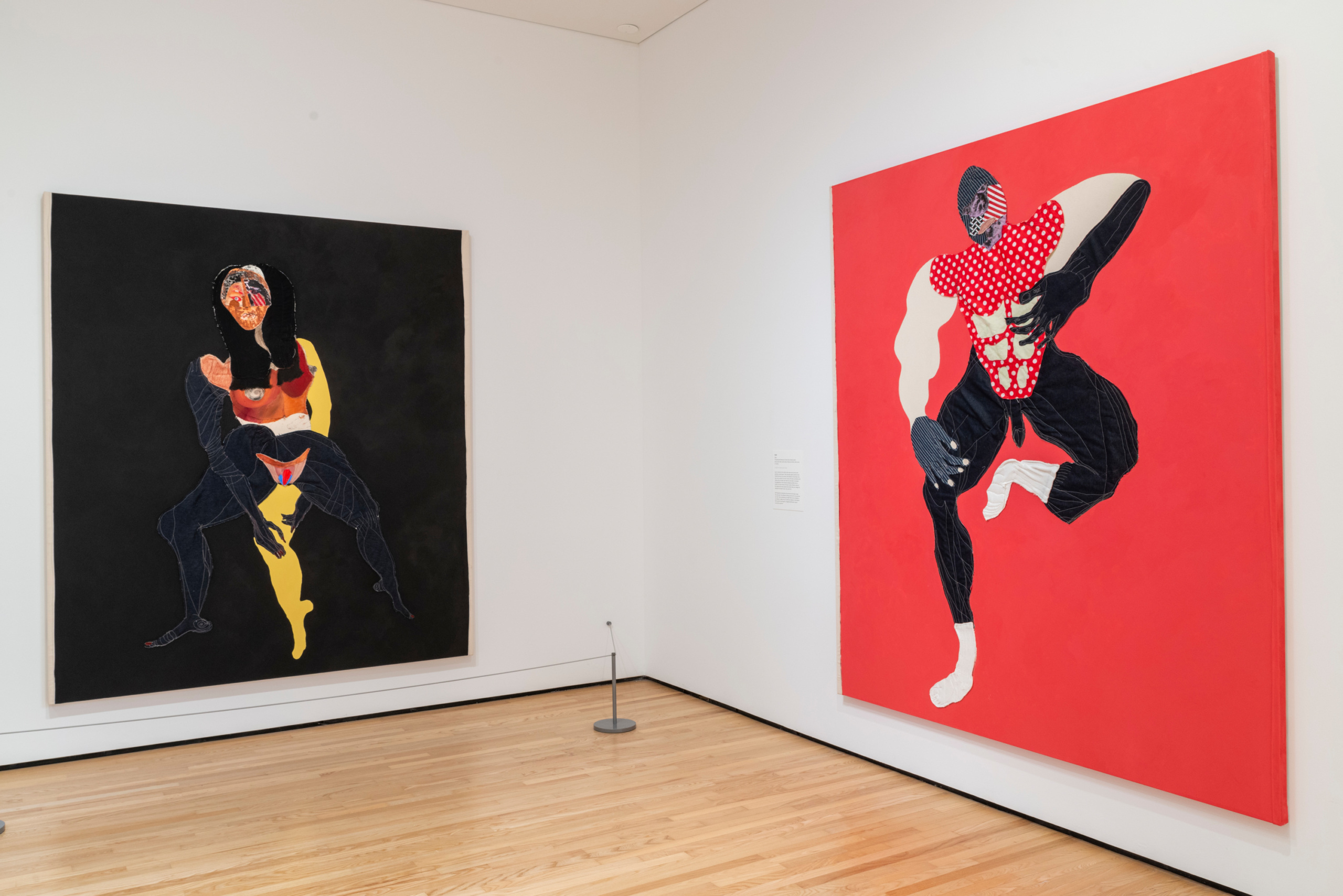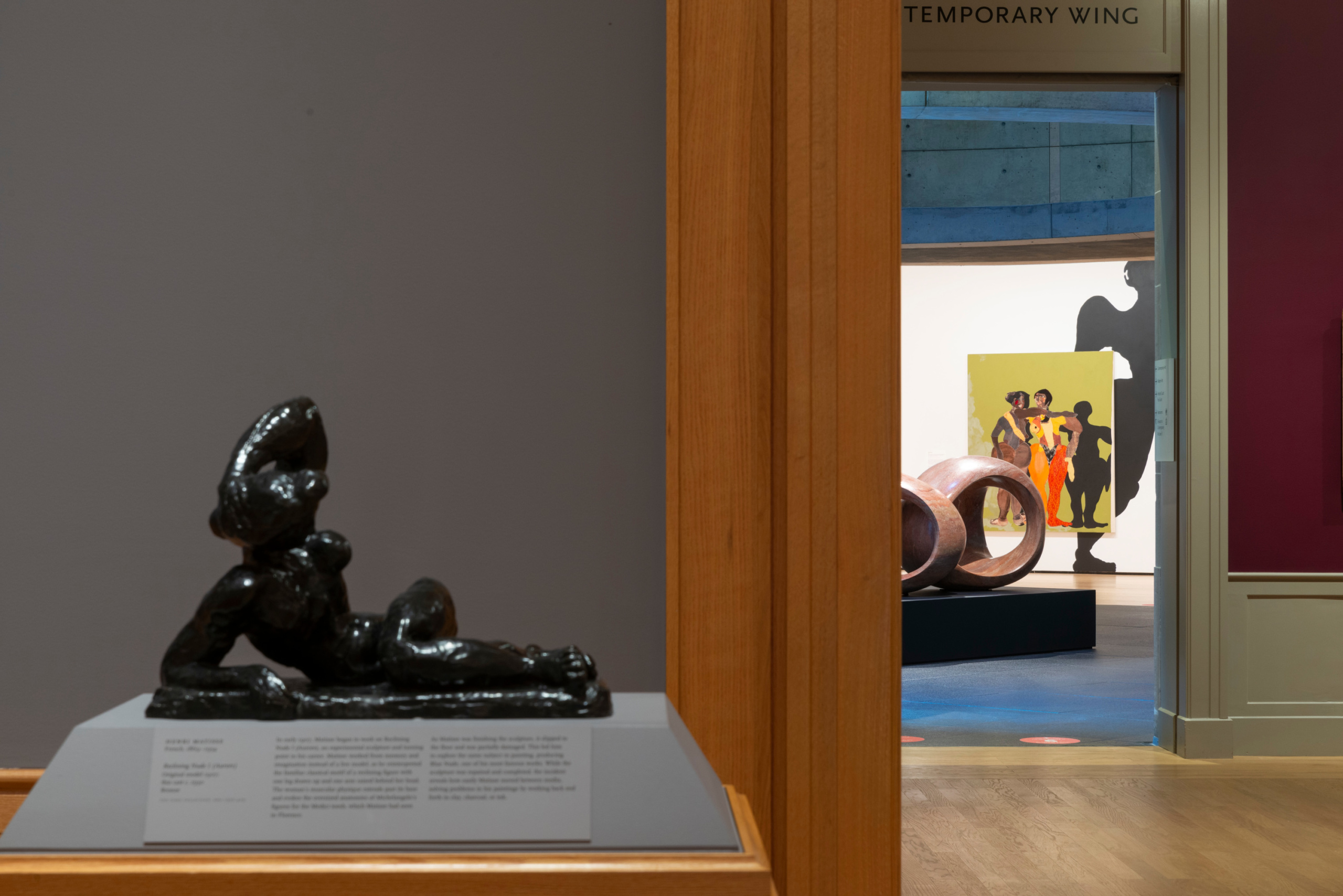
“I have an eye for aesthetics and I love to beautify women,” says artist Tschabalala Self. Over the past five years, Self has emerged as one of the most exciting and inventive figurative painters working today, particularly for her expressive, sensual and self-actualizing representations of Black women. She often employs mixed media, modeling the human form in the same visual language as her art in paint on canvas while expanding her oeuvre to incorporate sculptures and larger 3D pieces.
Her latest body of work, however, marks a new venture for the artist. For the first time, Self has worked directly with the archive collection of a museum as a source of reference. On view now at the Baltimore Museum of Art, her solo show “By My Self” presents new paintings and sculptures with an artwork that inspired them: Henri Matisse’s 1907-08 statue Two Women, originally titled Two Negresses.

An alumna of Yale School of Art and a 2019 artist-in-residence at The Studio Museum of Harlem—past residents include some of the most significant African American artists of our time, from Kerry James Marshall to Mickalene Thomas—Self employs a multidisciplinary approach. “Sculptures are an opportunity for artwork to exist within the actual exhibition space and are the most monumental way to make an impact on the viewer,” she explains. Her figurative works are a study in painting and printmaking, fusing acrylic, gouache, flashe and textiles to create lush composite figures while new iterations explore sculptures as conversational pieces, not only for dissemination, but as investigations in how art interacts with physical spaces.
For her show at the Baltimore Museum of Art, which holds the largest collection of works by Matisse of any museum in the world, Self presents, for the first time, works that respond to the work of another artist. Developing pieces around a specific canon of art was an especially illuminating experience. “I think it pushed me to work in a way I wouldn’t have otherwise and the works that I produced under that restraint are interesting,” she reveals. The challenge presented by the constraints of working within a boundary formed new, unusual and exciting outcomes even within her regular art practice.

Though not overt, this new body of work, too, deftly explores themes of sexuality. Ownership over one’s own sexuality is not traditionally bestowed upon Black women in American society. Historically, her sexuality has been weaponized against her, debasing her into an overly promiscuous and sexually objectified shadow of her full self. Self’s figures take control over their bodies, stripping away prejudice, racism and ideologies of Black inferiority through defiant acts of self-love.

The artist proclaims that her own identity as a Black woman defines her experiences, not only in how she interacts with the world but through a deeper awareness of her creativity, as well. “My subject is my muse,” she explains. “There are an infinite number of stories I can tell.” As seen in this museum show, Self is continuing to develop her practice, a safe space to discover and create new renditions of Black women figures in the fullness of their bodily agency.
Craving more culture? Sign up to receive the Cultured newsletter, a biweekly guide to what’s new and what’s next in art, architecture, design and more.










 in your life?
in your life?

